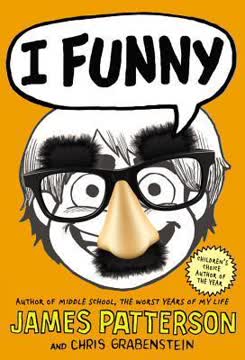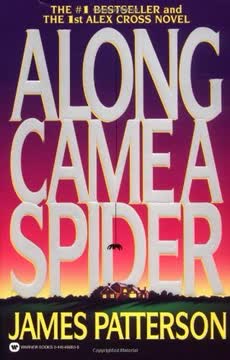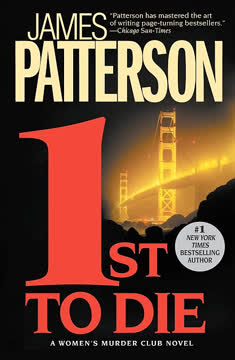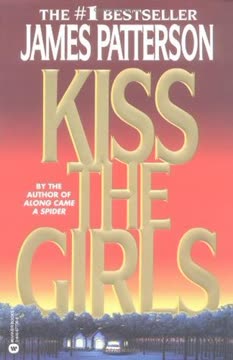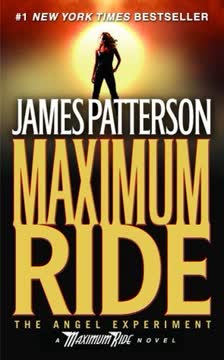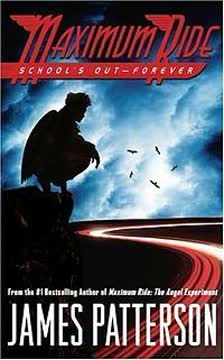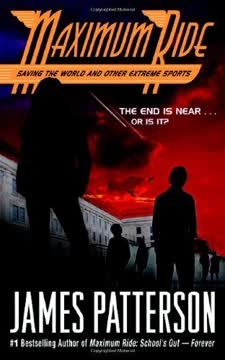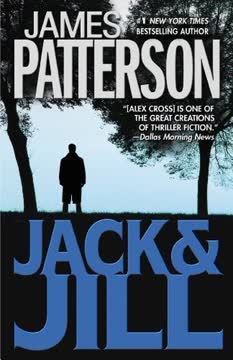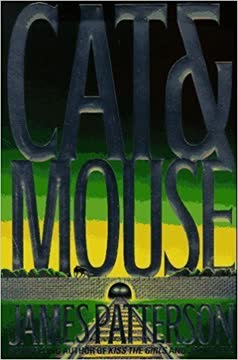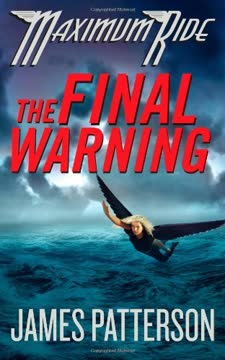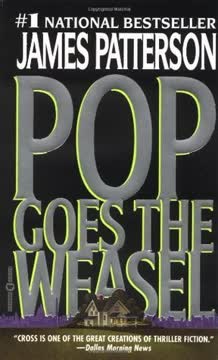Plot Summary
Spotlight and Stage Fright
Jamie Grimm, a middle schooler in a wheelchair, finds himself sweating under the harsh lights of a comedy club, struggling to remember his jokes as he competes in the Planet's Funniest Kid Comic Contest. The audience's expectant silence is suffocating, and Jamie's mind goes blank, leaving him to fumble through his act. This moment of panic is not just about stage fright—it's a metaphor for Jamie's life, where he constantly feels exposed, judged, and uncertain. Yet, even in this vulnerable state, Jamie's humor peeks through, and he manages to coax a laugh from the crowd, hinting at the resilience and wit that define his journey.
New Kid, New Struggles
Having recently moved from a small town to Long Beach, Jamie feels like a stranger in a strange land. The transition is jarring: new school, new faces, and a new family after a tragic accident left him orphaned. He's adopted by his aunt's family, the perpetually dour Smileys, and must navigate the social minefield of middle school while dealing with the emotional fallout of his loss and disability. Jamie's sense of not belonging is compounded by the ever-present threat of bullies and the challenge of making friends in an environment where he's constantly reminded of his differences.
Comedy as Survival
Jamie discovers that laughter is his best defense against the cruelty of middle school. He studies comedy legends, fills notebooks with jokes, and uses humor to deflect bullies and win over classmates. Comedy isn't just a hobby—it's a survival strategy, a way to reclaim agency in a world that often pities or underestimates him. Through quick wit and self-deprecating jokes, Jamie finds moments of connection and normalcy, even as he grapples with the pain of his past and the daily challenges of life in a wheelchair.
Bullies and Brothers
Jamie's chief antagonist is Stevie Kosgrov, the school's notorious bully who, in a cruel twist, becomes his adoptive brother. Stevie's relentless teasing and physical intimidation make home life as challenging as school. Yet, Jamie finds a strange comfort in being treated like any other kid—even if it means getting knocked out of his wheelchair. The dynamic with Stevie is complex: he's both a source of pain and, paradoxically, a marker of Jamie's "normalcy." The relationship underscores the theme that true belonging isn't about being spared hardship, but about being seen as an equal.
The Smileyville Blues
Life with the Smileys is bleak. Their inability to smile or show affection leaves Jamie feeling invisible and unappreciated. His bedroom is a converted garage, and the family dog, Ol' Smiler, is as glum as the rest. Yet, this environment becomes a testing ground for Jamie's comedy—if he can make the Smileys laugh, he can make anyone laugh. The lack of warmth at home drives Jamie to seek connection elsewhere, particularly with his uncle Frankie, whose diner becomes a haven of acceptance and encouragement.
Friends Who Get It
Despite the odds, Jamie forms deep bonds with two friends, Pierce and Gaynor, who treat him as an equal and support his comedic ambitions. Later, Gilda Gold and the enigmatic "Cool Girl" join his circle, offering both camaraderie and the spark of first romance. These friendships are characterized by mutual respect, shared laughter, and a willingness to look past Jamie's wheelchair to see the person within. Their unwavering support helps Jamie weather setbacks and fuels his determination to pursue stand-up comedy.
Seeds of Stand-Up
Uncle Frankie, a former yo-yo champion and diner owner, recognizes Jamie's comedic talent and encourages him to enter the Planet's Funniest Kid Comic Contest. Frankie's belief in Jamie is a crucial catalyst, providing both practical advice and emotional validation. The diner becomes Jamie's informal stage, where he hones his act on customers and gains confidence. Frankie's mentorship is a reminder that sometimes, all it takes is one person's faith to set a dream in motion.
Dreaming Big, Fearing Bigger
As the contest approaches, Jamie is torn between hope and fear. He practices obsessively, but self-doubt gnaws at him—what if he chokes? What if people only laugh out of pity? The pressure mounts as he sneaks out to the Ronkonkoma Comedy Club, determined to prove himself. Jamie's journey is marked by cycles of confidence and panic, illustrating the universal struggle of pursuing a dream in the face of insecurity and the fear of failure.
Practice, Panic, Perform
Jamie's path to the stage is paved with relentless practice, but when the moment arrives, nerves threaten to undo him. He battles through mental blocks, leans on the "three Ps" (practice, prepare, perform), and draws strength from memories of his family and the encouragement of friends. The act itself is a rollercoaster—initial stumbles give way to genuine laughs as Jamie finds his rhythm, blending self-deprecating humor with sharp observations about life, disability, and middle school.
The Ronkonkoma Showdown
Jamie's set at the contest is a triumph; he wins over the audience and the judges, earning the title of Long Island's Funniest Kid Comic. But victory is bittersweet. Rumors swirl that he won out of pity, not merit, and online trolls (including Stevie) spread doubt about his talent. The sting of these accusations threatens to overshadow his achievement, forcing Jamie to confront the question: is he truly funny, or just a sympathy case?
Winning and Whispers
The aftermath of Jamie's win is a whirlwind of attention, both positive and negative. At school, he's briefly celebrated, but soon becomes the target of snide remarks and whispers about "pity points." Even his own confidence wavers as he wonders if he deserves the accolades. The support of his friends and Cool Girl helps, but the experience exposes the fragility of self-worth when it's tied to external validation.
Pity or Punchline?
With Cool Girl's tough love and honest feedback, Jamie begins to see that his comedy is more than a crutch—it's a gift. She challenges him to stop hiding behind jokes and confront his feelings head-on. Jamie learns that true humor comes from authenticity, not self-mockery or pandering for sympathy. This realization empowers him to prepare for the next round of competition in New York City, determined to win on his own terms.
Cool Girl's Challenge
Cool Girl becomes a confidante and catalyst for Jamie's growth. Through candid conversations—sometimes awkward, sometimes profound—she pushes Jamie to open up about his fears, his family's accident, and his dreams. Their budding romance is sweet and tentative, marked by mutual respect and a willingness to ask hard questions. Cool Girl's insistence on honesty helps Jamie process his grief and embrace his identity, both on and off the stage.
Family, Forgiveness, and Flops
As Jamie prepares for the state finals at Gotham, he tests his material on the Smileys—and bombs spectacularly. The experience is humbling, forcing him to reckon with the fine line between humor and hurt. At the competition, Jamie's act pokes fun at friends and family, earning laughs but also wounding those he loves. The aftermath is a lesson in empathy: Jamie apologizes, and his loved ones forgive him, teaching him that comedy should unite, not divide.
The Gotham Gauntlet
At the New York State finals, Jamie is up against seasoned young comics, some with professional training. The pressure is immense, and backstage banter with rivals like Shecky from Schenectady rattles his nerves. Yet, when Jamie takes the stage, he channels his experiences—good and bad—into a set that is both hilarious and heartfelt. He wins the contest, but more importantly, he wins the respect of his peers and the realization that his story matters.
Laughs and Losses
In the wake of his victory, Jamie finally opens up to Cool Girl about the car accident that changed his life. Sharing his pain is cathartic, and her compassion helps him begin to heal. Jamie visits the rehabilitation center where he recovered, reconnecting with old friends and performing for the patients. The experience reinforces the power of laughter as medicine and the importance of hope, even in the darkest times.
Hope at the Hopeless Hotel
Jamie's impromptu performance at the children's rehab center is a highlight—not just for him, but for the kids and staff who need a reason to smile. He realizes that his journey isn't just about personal triumph; it's about using his gift to lift others. The "Hopeless Hotel" becomes a place of laughter and resilience, and Jamie sees firsthand how humor can transform despair into hope.
The Road to Resilience
With newfound confidence, Jamie looks ahead to the next round of the contest and whatever challenges life may bring. He understands that setbacks are inevitable, but so is the possibility of joy. Surrounded by friends, family, and the memory of those he's lost, Jamie chooses to keep laughing, keep trying, and keep hoping. His story is a testament to the healing power of humor, the strength found in vulnerability, and the unbreakable spirit of a kid who refuses to give up.
Characters
Jamie Grimm
Jamie is a middle schooler navigating life in a wheelchair after a tragic accident claimed his family. His humor is both a shield and a bridge, allowing him to cope with grief, deflect cruelty, and connect with others. Jamie's journey is one of self-discovery: he learns to distinguish between using comedy to hide and using it to heal. His relationships—with friends, family, and rivals—force him to confront his insecurities and embrace his unique voice. Jamie's arc is defined by resilience, vulnerability, and the courage to keep laughing in the face of adversity.
Stevie Kosgrov
Stevie is the school's top tormentor and, through adoption, Jamie's stepbrother. His aggression is indiscriminate, targeting anyone in his path, but his treatment of Jamie is complicated—sometimes cruel, sometimes oddly egalitarian. Stevie embodies the challenges of living with someone who refuses to show empathy, yet his presence pushes Jamie to assert himself and find strength in adversity. Over time, their relationship evolves from pure antagonism to a grudging mutual respect, highlighting the messy realities of family and forgiveness.
Uncle Frankie
Frankie, Jamie's paternal uncle, is a beacon of warmth and encouragement. As a diner owner and former yo-yo champion, he brings humor and wisdom to Jamie's life, nurturing his comedic ambitions and offering a safe space to be himself. Frankie's belief in Jamie is unwavering, providing the validation and love that the Smileys lack. His mentorship is instrumental in Jamie's growth, teaching him that laughter can be both a refuge and a gift to others.
The Smileys
Jamie's aunt, uncle, and cousins—the Smileys—are defined by their lack of joy and emotional expression. Their home is cold, both literally and figuratively, and their indifference exacerbates Jamie's sense of isolation. Yet, their eventual acceptance and laughter signal a slow thaw, suggesting that even the most closed-off hearts can be reached. The Smileys serve as both obstacle and audience, challenging Jamie to find humor in the bleakest circumstances.
Pierce
Pierce is Jamie's brainy best friend, always ready with a fact or a supportive word. His intelligence is matched by his empathy, and he treats Jamie as an equal, never patronizing or pitying him. Pierce's steady presence anchors Jamie, providing both comic fodder and genuine companionship. He represents the importance of friendship built on respect and understanding.
Gaynor
Gaynor brings a rebellious energy to Jamie's circle, with his tattoos, nose ring, and irreverent humor. He's fiercely loyal, quick to defend Jamie, and unafraid to be the butt of a joke. Gaynor's willingness to embrace his own quirks encourages Jamie to do the same, and his antics add levity to even the darkest moments.
Gilda Gold
Gilda is drawn to Jamie's humor and becomes a key member of his friend group. Her laughter is infectious, and her support is unwavering. Gilda's presence reinforces the idea that comedy can forge connections and that being seen and appreciated for who you are is transformative.
Cool Girl (Suzie Orolvsky)
Cool Girl is Jamie's crush and eventual confidante. Her directness and refusal to treat Jamie differently challenge him to be honest and vulnerable. She pushes him to confront his pain, question his motives, and embrace his identity beyond the wheelchair. Their relationship is a source of both comfort and growth, illustrating the power of authentic connection.
Mrs. Kanai
Jamie's ELA teacher, Mrs. Kanai, recognizes his talent and encourages his creative pursuits. Her belief in Jamie's potential, coupled with her willingness to treat him like any other student, provides a subtle but important source of validation. She represents the impact that caring educators can have on a student's self-esteem and ambition.
Shecky from Schenectady
Shecky is a fellow contestant at the state finals, embodying the competitive, sometimes cutthroat world of stand-up comedy. His brashness and reliance on recycled jokes contrast sharply with Jamie's authenticity, highlighting the difference between performing for laughs and performing from the heart. Shecky's presence forces Jamie to define his own comedic style and values.
Plot Devices
Comedy as Coping Mechanism
Jamie's use of comedy is both a defense against trauma and a means of forging relationships. Jokes allow him to control how others perceive him, turning pity into laughter and isolation into inclusion. The narrative explores the double-edged nature of humor: it can heal, but it can also hurt, especially when wielded carelessly. Jamie's journey is about learning to use comedy not as a mask, but as a tool for honesty and hope.
Contest Structure and Performance Anxiety
The Planet's Funniest Kid Comic Contest provides a clear goal and structure, propelling Jamie through cycles of preparation, performance, and reflection. Each round of the contest raises the stakes, forcing Jamie to confront his fears, adapt his material, and grapple with the pressures of public scrutiny. The contest is both a literal and metaphorical stage for Jamie's transformation.
Foreshadowing and Flashbacks
The story employs foreshadowing—Jamie's early stage fright hints at deeper insecurities—and flashbacks to his family's accident, gradually revealing the source of his pain. These devices build empathy and suspense, allowing readers to piece together Jamie's history and understand the weight he carries.
Authenticity Versus Pity
A recurring motif is the tension between being laughed at and being laughed with, between earning respect and receiving pity. Jamie's internal conflict—and the external skepticism he faces—forces him to examine his motives and redefine success. The narrative challenges readers to consider what it means to be truly seen and valued.
Healing Through Vulnerability
Jamie's willingness to share his story, first with Cool Girl and then with others, marks a turning point. Vulnerability becomes a source of strength, enabling him to process grief, accept support, and inspire hope in others. The story suggests that healing is a communal process, fostered by honesty and empathy.
Analysis
"I Funny: A Middle School Story" is a heartfelt, humorous exploration of resilience, identity, and the healing power of laughter. Through Jamie Grimm's journey, the book tackles weighty themes—grief, disability, bullying, and belonging—without ever losing its lightness or accessibility. Patterson and Grabenstein deftly balance comedy and pathos, showing how humor can be both a shield and a bridge, a way to survive and a way to connect. The narrative champions authenticity over pity, urging readers to look beyond surface differences and recognize the shared humanity in everyone. Ultimately, Jamie's story is a testament to the idea that hope whispers "try one more time," and that even in the face of loss and adversity, it's possible to find joy, friendship, and purpose. The book's message is clear: laughter is not just an escape, but a way forward—a medicine for the soul and a spark for new beginnings.
Last updated:
FAQ
Synopsis & Basic Details
What is I Funny: A Middle School Story about?
- A Young Comedian's Journey: I Funny: A Middle School Story follows Jamie Grimm, a middle schooler in a wheelchair, as he navigates the challenges of a new town, a new adoptive family, and the lingering pain of a past tragedy, all while pursuing his dream of becoming the Planet's Funniest Kid Comic.
- Humor as a Shield: Jamie discovers that his quick wit and ability to tell jokes are powerful tools for coping with bullies, making friends, and finding his place in a world that often sees only his disability.
- Quest for Self-Acceptance: The narrative centers on Jamie's participation in a comedy contest, which becomes a metaphorical stage for him to confront his fears, overcome self-doubt, and ultimately learn to embrace his unique identity and experiences.
Why should I read I Funny: A Middle School Story?
- Inspiring Tale of Resilience: Readers will be drawn to Jamie's unwavering spirit and his use of humor to overcome profound personal loss and daily adversity, offering a powerful message about finding strength in vulnerability.
- Relatable Middle School Struggles: Beyond the unique circumstances, the book captures universal middle school experiences—bullying, fitting in, first crushes, and the search for identity—making it highly relatable for young readers.
- Heartfelt Humor and Wit: James Patterson and Chris Grabenstein craft a genuinely funny story filled with clever jokes and a charming narrative voice, proving that laughter truly can be the best medicine.
What is the background of I Funny: A Middle School Story?
- Orphaned by Tragedy: Jamie Grimm's life was irrevocably altered by a car accident that killed his entire immediate family (mother, father, and little sister Jenny), leaving him in a wheelchair and subsequently adopted by his emotionally distant aunt and uncle, the Smileys.
- New Life in Long Beach: Jamie moves from a small, rural town called Cornwall to the Long Island suburb of Long Beach, a significant cultural and environmental shift that exacerbates his feelings of being an outsider.
- Disability and Adaptation: The story is set against Jamie's ongoing adaptation to life in a wheelchair, exploring the physical challenges, the social perceptions, and his personal journey to redefine "normalcy" and self-worth.
What are the most memorable quotes in I Funny: A Middle School Story?
- "If life gives you lemons, learn how to juggle.": This quote, shared by Jamie in Chapter Two, encapsulates his philosophy of turning adversity into an opportunity for skill and joy, highlighting his resilient spirit and the core theme of I Funny.
- "You don't have to try so hard to be funny because, trust me, Jamie, you are funny.": Billy Crystal's advice in Jamie's dream (Chapter 35) is a pivotal moment, validating Jamie's inherent comedic talent and encouraging him to embrace authenticity, a key aspect of Jamie Grimm's motivation.
- "When the world says 'Give up,' hope whispers 'Try it one more time'": This anonymous quote, scribbled on Jamie's cast at the Hope Trust Rehabilitation Center (Chapter 67), becomes a powerful mantra for resilience and perseverance, defining the overarching themes in I Funny.
What writing style, narrative choices, and literary techniques does James Patterson use?
- First-Person, Conversational Tone: The novel is narrated entirely by Jamie Grimm, creating an immediate, intimate connection with the reader through his witty, self-deprecating, and often direct conversational style, making Jamie Grimm's voice distinct.
- Short Chapters and Engaging Pacing: Characteristic of James Patterson's style, the book features very short, punchy chapters that maintain a fast pace and keep young readers engaged, often ending with a hook or a joke.
- Humor as a Narrative Device: Jokes, one-liners, and comedic observations are woven throughout the narrative, not just as plot points but as a fundamental lens through which Jamie perceives and processes his world, showcasing the power of comedy as a coping mechanism.
Hidden Details & Subtle Connections
What are some minor details that add significant meaning?
- Friends' Empathetic Squatting: Pierce and Gaynor's habit of "hunker[ing] down into a deep knee bend or find[ing] something to sit on so we're all talking eye to eye" (Chapter 5) subtly highlights their genuine empathy and respect for Jamie, treating him as an equal rather than looking down on him, literally or figuratively.
- Stevie's Goldfish Punch: Stevie Kosgrov's boast about punching a goldfish as a baby (Chapter 18) is a seemingly throwaway line that establishes his ingrained cruelty and irrational aggression, foreshadowing his later actions and emphasizing the depth of his bullying nature.
- New Yorkers' "Normal" Treatment: Jamie's observation that New Yorkers "completely ignore" him and his wheelchair (Chapter 28) is initially jarring but becomes a source of comfort, as it signifies a lack of pity or special treatment, allowing him to feel "normal" in a way Long Beach doesn't.
What are some subtle foreshadowing and callbacks?
- Prologue's Stage Fright Echoes: Jamie's initial "flop sweat" and inability to remember his jokes in the prologue (Chapter One) subtly foreshadows his recurring performance anxiety and "choking" moments throughout the story, particularly during his ELA speech and before the state finals.
- Uncle Frankie's Yo-Yo Contest: Uncle Frankie's confession that he also didn't tell anyone about his first yo-yo competition (Chapter 45) creates a powerful callback, drawing a parallel between his and Jamie's fears of failure and validating Jamie's secret entry into the comedy contest.
- Mr. Burdzecki's "I Funny": The Russian customer's simple phrase, "You funny boy," which Jamie adopts as "I funny" (Chapter 13), becomes a recurring internal mantra and a symbol of self-acceptance, subtly building towards Jamie's eventual confidence in his comedic identity.
What are some unexpected character connections?
- Jamie and Uncle Frankie's Shared Vulnerability: Beyond mentorship, Uncle Frankie reveals a deeper connection by admitting his own stage fright during his yo-yo championship (Chapter 45), showing Jamie that even his heroes experience similar anxieties, fostering a bond of shared vulnerability.
- Mrs. Kanai and Mr. Sour Patch's Quiet Support: Jamie's ELA teacher, Mrs. Kanai, and even the stern Vice Principal, Mr. Sour Patch, show unexpected support by attending his state finals (Chapter 52), demonstrating that his journey has resonated beyond his immediate circle and that even seemingly indifferent adults care.
- Stevie's Grudging Handshake: After Jamie's performance at the Hope Trust, Stevie offers a handshake (Chapter 68), a significant, albeit begrudging, gesture of respect that hints at a complex, evolving relationship beyond pure antagonism, suggesting a subtle shift in Stevie Kosgrov's motivations.
Who are the most significant supporting characters?
- Mr. Burdzecki, the Russian Customer: His simple, repeated affirmation "You funny boy" (Chapter 13) becomes a powerful, unadulterated source of validation for Jamie, helping him internalize his comedic identity and serving as a touchstone against self-doubt.
- Mrs. Kanai, the ELA Teacher: Beyond her role in assigning the public speaking that triggers Jamie's initial "choking," Mrs. Kanai's consistent encouragement and eventual attendance at his show (Chapter 52) highlight the quiet but profound impact a supportive educator can have on a student's confidence and aspirations.
- Carly and Derek from Hope Trust: These former fellow patients (Chapter 66) serve as living testaments to resilience and hope, their progress inspiring Jamie and reinforcing the therapeutic power of the rehabilitation center, making his performance there deeply meaningful.
Psychological, Emotional, & Relational Analysis
What are some unspoken motivations of the characters?
- Jamie's Quest for "Normalcy": Beneath his desire to be funny, Jamie is deeply motivated by a longing to be seen as a "normal" kid, not defined by his wheelchair. His joy at being punched by Stevie (Chapter 4) and his appreciation for New Yorkers' indifference (Chapter 28) reveal this profound need for equal treatment over pity.
- Stevie Kosgrov's Insecurity: Stevie's relentless bullying and need to assert dominance, especially over Jamie, could stem from his own deep-seated insecurities or a desire for control in his own life, perhaps feeling overshadowed by his adoptive parents' emotional distance, offering a deeper look into Stevie Kosgrov's motivations.
- The Smileys' Emotional Repression: The Smileys' inability to smile or laugh (Chapter 7) isn't just a quirk; it suggests a profound emotional repression, possibly a coping mechanism for their own unaddressed issues, making Jamie's attempts to make them laugh a challenge to their very emotional core.
What psychological complexities do the characters exhibit?
- Jamie's Trauma and Defense Mechanisms: Jamie exhibits complex psychological responses to his past trauma, using humor as a sophisticated defense mechanism to deflect pain and control social interactions, often masking deeper vulnerability and fear of pity.
- The Double-Edged Sword of Self-Deprecating Humor: While Jamie's self-deprecating jokes (e.g., "Good thing I brought my own chair") are effective, they also reflect an internal struggle with self-worth, highlighting the fine line between using humor to connect and using it to reinforce negative self-perceptions.
- Cool Girl's Directness as a Coping Strategy: Cool Girl's blunt honesty, exemplified by her "whiz" question (Chapter 47), can be seen as her own psychological complexity—a refusal to engage in social niceties or pity, which, while initially jarring, ultimately fosters a deeper, more authentic connection with Jamie.
What are the major emotional turning points?
- The "Normal" Punch: Jamie's unexpected feeling of "normalcy" after Stevie punches him out of his wheelchair (Chapter 4) is a crucial emotional turning point, as it redefines his perception of acceptance and equality, valuing genuine interaction over being treated "special."
- Cool Girl's Unfiltered Questions: Cool Girl's direct questions about his disability, particularly "How do you take a whiz?" (Chapter 47), initially embarrass Jamie but ultimately lead to a profound emotional breakthrough, as he realizes her honesty is a form of genuine acceptance, free from pity.
- The Hope Trust Performance: Jamie's impromptu comedy show at the Hope Trust Rehabilitation Center (Chapter 67) marks his most significant emotional turning point, as he uses his humor not for personal gain or validation, but to bring joy and hope to others who share similar struggles, signifying true healing and purpose.
How do relationship dynamics evolve?
- Jamie and Stevie: From Antagonism to Grudging Respect: The relationship between Jamie and Stevie evolves from pure bullying and fear to a complex dynamic where Stevie's actions, though still mean, sometimes inadvertently help Jamie feel "normal," culminating in a handshake that signifies a grudging, if still adversarial, mutual acknowledgment (Chapter 68).
- The Smileys: From Indifference to Delayed Appreciation: Jamie's adoptive family, initially characterized by their emotional flatness and inability to laugh, slowly begins to "get" his jokes, albeit with a time delay (Chapter 59), showing a gradual, if awkward, thawing of their emotional barriers and a nascent form of acceptance.
- Jamie and Cool Girl: From Crush to Confidante: Their relationship deepens from a shy crush to a profound emotional connection, driven by Cool Girl's candidness and Jamie's eventual vulnerability in sharing his traumatic past (Chapter 61), transforming their bond into one of deep trust and mutual support.
Interpretation & Debate
Which parts of the story remain ambiguous or open-ended?
- Jamie's Decision on the Operation: The story leaves Jamie's decision about the dangerous "experimental procedure" to potentially allow him to walk again (Chapter 60) open-ended, emphasizing that his journey is about self-acceptance and purpose regardless of physical ability, rather than a definitive cure.
- Stevie Kosgrov's Future Evolution: While Stevie offers a handshake and a "mortal enemies" pact (Chapter 68), the true extent of his character development and whether he will ever genuinely change or fully accept Jamie remains ambiguous, leaving room for future growth or continued conflict.
- The Long-Term Impact of Fame: The narrative hints at Jamie's continued success in comedy, but the long-term effects of his newfound "fame" on his personal life and relationships are left to the reader's imagination, posing questions about how he will balance his public persona with his private self.
What are some debatable, controversial scenes or moments in I Funny: A Middle School Story?
- The "Pity Win" Controversy: The widespread belief that Jamie won the Ronkonkoma contest due to "pity points" (Chapter 43) sparks a significant debate within the story and among readers, challenging the authenticity of his victory and forcing Jamie to confront external perceptions versus his own talent.
- Jamie's Jokes at Friends' Expense: Jamie's decision to use personal details and quirks of his friends and family (like Cool Girl's "whiz" question or Uncle Frankie's yo-yo cooking) in his state finals act (Chapter 56) is debatable, raising questions about the ethics of comedy and the line between humor and betrayal, leading to "Casualties of Comedy" (Chapter 58).
- The "Meals on Wheels" Joke: Aunt Smiley's retelling of the "Meals on Wheels" vulture joke (Chapter 59) is a controversial moment, as it's a common, often insensitive, joke about disability. Its inclusion and the Smileys' laughter highlight their delayed and sometimes awkward attempts at connection, but also spark discussion about appropriate humor.
I Funny: A Middle School Story Ending Explained: How It Ends & What It Means
- Acceptance Over Ambition: The true climax and meaning of I Funny's ending isn't Jamie winning the New York State competition, but his impromptu performance at the Hope Trust Rehabilitation Center (Chapter 67). This act of selfless humor, bringing joy to fellow patients, signifies his shift from seeking external validation to finding purpose in helping others, embodying the core themes in I Funny.
- Healing Through Vulnerability: Jamie's decision to finally share the traumatic details of his family's accident with Cool Girl (Chapter 61) and then to incorporate his experiences at the "Hopeless Hotel" into his comedy, marks a profound emotional healing. It means he no longer hides behind jokes but uses his vulnerability to connect and inspire, transforming his pain into a source of strength.
- Embracing Hope and the "Road to Whatever Comes Next": The ending emphasizes that Jamie's journey is ongoing, with the "Road to Whatever Comes Next" (Chapter 69) symbolizing life's continuous challenges and opportunities. His commitment to "not give up" and to let "hope whisper 'Try it one more time'" signifies his complete self-acceptance and resilience, ready to face future contests and life's uncertainties with humor and an open heart.
Review Summary
I Funny receives mostly positive reviews, with readers praising its humor, heartwarming story, and relatable characters. Many appreciate the balance of comedy and serious themes, as well as the inspiring message about overcoming challenges. Some readers found the jokes hit-or-miss, and a few felt the humor was lacking. The book's accessibility and appeal to young readers are frequently mentioned. Overall, it's seen as an entertaining and touching story about a young aspiring comedian in a wheelchair.
Download PDF
Download EPUB
.epub digital book format is ideal for reading ebooks on phones, tablets, and e-readers.
